good enough gardening: a how-to for busy folks
from a former Type A woman turned Type C post-kids.
“Spring is the time of plans and projects.” ― Leo Tolstoy
Gardening doesn’t have to be an all-or-nothing pursuit — especially if you’re parenting, schlepping kids to weekend activities, working long hours, travel frequently, or, like most adults I know, are just plain tired. Consider this your permission slip to do the bare minimum some years (or many years!) and still grow something beautiful. Let’s talk shortcuts, lazy hacks, priorities, and why “good enough” gardening might actually be the best kind.
If you, like me, have spent any amount of time sauntering around botanical gardens, wandering nurseries, attending flower sales, or watching gardening TV shows, you’ll notice one overarching theme —it appears to be, broadly speaking, a hobby rife with retirees.
I have often wondered if older people get into gardening because they suddenly are awash in free time post-retirement, or if they always gardened, but to a lesser extent, and once they were retired they could finally throw themselves fully into the hobby? We millennials love to joke how we have skipped over our midlife crises and gone straight to granny hobbies like bird watching, gardening, and knitting.
These are the musings of a garden-loving mom of two young kids who managed to finagle a few hours outside today, make a bit of headway on some garden projects, and marvel at how in the world anyone with any sort of busy schedule is able to maintain a picture perfect landscape, blue-ribbon worthy flower bed, or weed-free vegetable garden.
Now, you may be thinking, “Duh, why don’t you just pay a landscaping company?” And to that I have three answers.
I have a horrible DIY complex, and truly love spending time outside puttering around and doing garden chores. Why would I pay someone to do my favorite hobby?!
I don’t want to use dyed mulch, pesticides, or herbicides, and pretty much every yard in my town who uses a landscaper has a copy + paste style yard.
I’m a frugal bitch to my core, and landscape services around here run ~$300/month. In this economy? I think not.
So going into my 5th year of gardening with small children at home, I like to use the analogy of juggling to decide which tasks I’ll tackle.
When you’re juggling a bunch of balls, you need to know which ones are glass, and which ones are plastic. Meaning, which are okay to drop and which you need to try like hell to keep in the air so they don’t break. With only so much free time and a laundry list of garden tasks, I really try to maximize my time outside and focus on the things that will make a huge difference, while letting others fall by the wayside for now.
When it comes to gardening, here are some of my plastic balls:
Mulching the flower beds. I have a huge pile of wood chips I got from ChipDrop last year, and in a perfect world all of our flower beds would be freshly mulched every year. But we are on ~1.5 acres, and the odds of that actually happening are slim. We have loads of ground cover in the flower beds, which does a great job of suppressing weeds, and I mulch when I have tackled all of the glass ball items.
Deadheading flowers. Experts say you should always do it, but that is one of the first I cast aside. I’m not a flower farmer nor do I have a show garden, so maximizing blooms isn’t a major priority.
Pruning hedges, rhododendrons, forsythia, azaleas, and the like. I just let them grow and call it a day.
Fall garden cleanup. Aside from tossing any diseased plants or squash vine borer-riddled squash plants, I leave everything in place. For the beneficial insects, of course!
Dividing perennials. This one I might have to begrudgingly do this year, lest we be overrun by hostas and rudbeckia. But it’s so far down my list of priorities right now.
Labeling everything: In a perfect world, all your seedlings and rows would have neat little labeled tags. My reality is planting mystery tomatoes, lettuces that I will have little hope of knowing the variety when I pick then, and surprise dahlia tubers.
Turning the compost pile regularly: Great if you have time! But if you don’t, nature will still do its thing. Just more slowly.
Perfect garden aesthetics: Sometimes I get a bee in my bonnet and decide to edge all of the flower beds, but then halfway through I deeply regret it because it’s such a grueling, arduous task. Plants don’t care if the beds are a little crooked.
Companion planting “rules”: It's okay if you didn’t memorize the entire companion planting chart. Channel every cat in the world —if it fits, it sits!
Pinching back herbs: Yes, it makes them bushier. No, you don’t have to do it religiously. Although I do try to pinch basil, simply because I am a terrible glutton for homemade pesto, meaning I try to grow as much basil as I am able to.
Crop succession planning: In my perfect world, I am succession planting like a pro, but instead for this time in my life, I plop some seeds in the ground at the same time that I’m transplanting. So when my transplanted lettuce eventually bolts, there is another round that is maturing when the first round gets chopped down.
The glass balls I can’t let drop:
Seed starting, potting up, hardening off, and transplanting. I give myself a couple weeks of wiggle room, but Mother Nature waits for no one, so I really try to focus most of my efforts here. This year I plum forgot to start basil! But it’s ok, I’ll buy starter plants from a local farmer.
Fruit tree pruning. To be perfectly honest, this task falls almost exclusively on my husband’s list, as he has deemed himself the fruit tree guy. I’m in charge of mulching, and building out the fruit tree guilds I have been working on gradually. The idea is to create a mini ecosystem where companion plants are arranged around a fruit tree to support its health, attract pollinators, suppress weeds, and build soil fertility. In our yard, that looks like planting comfrey, yarrow, creeping thyme, wild strawberries, chives, Egyptian walking onions, and rhubarb around the trees.
Weeding the garden beds and adding some fresh compost every year. Try to talk to me in July about weeding though, and I’ll pretend I didn’t hear you.
Putting up peony supports. I adore our peonies but gosh darn it, they’re the floopiest flowers that ever did floop. I tend to leave most of our perennial flowers alone but these need a little additional support. Relatable, honestly!
Watering during heatwaves or dry spells: This can mean life or death for your plants, especially young seedlings, newly planted trees, and container plants. RIP our window boxes and hanging baskets that I intrepidly planted our first year here, only to never plant again.
Harvesting on time: Letting veggies stay too long on the plant can lead to bolting, rot, or the always shocking but not very delicious monster zucchinis that seem to double in size overnight.
Pest + disease checks: Catching an aphid outbreak, cabbage looper infestation, or powdery mildew early can save entire crops. And cucumber beetles! Those little shits.
Covering tender crops before a frost: That one night of inattention can wipe out your tomatoes or basil in one heartbreaking swoop.
Shoring up any fence weaknesses. A few years ago, I made the horrible mistake of yanking out the old garden fence that was here when we moved in before we had concrete plans to put a new one up. Cut to: me, transplanting the seedlings that I had lovingly tended for months in the basement, only to sob hysterically as I watched a groundhog mow them all down mere hours after I finished. I vaguely recall emitting a Viking war cry-esque scream when I walked out to the garden and saw all my hard work was completely gone. Good fences make good neighbors, and they also make happier gardeners.
So if you find yourself slightly overwhelmed at all of the things you think you should be doing in the garden, just give yourself some grace! I always tell my husband I could easily spend 8 hours a day outside and still manage to find things to do. A garden is always a work in progress.
But alas, life beckons and I fit my gardening in when I can. My garden may not look like the dreamy, aesthetic gardens on Pinterest but I just call it an English cottage garden, tell myself I’m supporting pollinators, and call it a day.
I know that someday, our kids will be grown up and I’ll long for the days when they were running around underfoot. And every year, they become a little more helpful in the garden and are able to play more independently, allowing us to get some bigger projects done. But I try to not wish the time away, because as they say, “the days are long but the years are short.”
But when they’re off to college? It’s game time, baby.
Until next (pizza) Friday,
Amy
LOLs of the Week
Reading
Iron Flame by Rebecca Yarros
Parable of the Sower by Octavia E. Butler
Careless People by Sarah Wynn-Williams
Listening
I was on The Garden Party podcast again this week, yapping about tomatoes and more garden-y goodness. I had a blast and learned a lot from everyone as always!
Growing
I’m in zone 6a here in Central Massachusetts, which means it’s ~3 weeks before last frost. I use May 20th as our tentative first frost-free date, as historically that’s what our microclimate has dictated. A frost-free date is an estimate of when your area should be safe from freezing temperatures in the spring, but it’s not a guarantee. Think of it as a general guideline based on past weather patterns. Some years, frost might linger a little longer, and other years, it might warm up sooner. If you’re confused about what this means for your location check out this handy dandy tool!
I was a very patient gal and actually followed my hardening off schedule —hooray! The past couple days I was busy transplanting everything from the first round of seeds —lettuces, kales, parsley, celery, chard, onions, mizuna, bok choy, and a few other goodies.
I’ve been using oodles of chives and Egyptian walking onions, and the first of the asparagus has poked through the leaf mulch! I planted crowns back in 2022, and the first three years it’s recommended to avoid harvesting from the plants, to allow them to focus on growing a strong root system so they can produce for 20+ years. This is the first year we’ll be able to harvest a few spears, but I’m going to play it safe and only enjoy a couple.
It’s tomato potting up time, and usually mine would be further ahead but they always catch up once they’re in the ground. I also plopped all of my dahlia tubers in trays with potting soil to get a jump start on those, too. And of course I didn’t label them. Mystery tubers!
Making
This year, I’m trying my darndest to make everything within reason from scratch —meaning, the goal isn’t perfection, but stretching myself to rethink my grocery store purchases. I’m talking all baked goods, granola, crackers, sauces, dressings, dips, etc. I’m trying to be strategic about making and freezing extra, planning ahead, and getting the kids involved. This isn’t a tradwife/everything is poison vibe, but more of a “everything at the grocery store is so freaking expensive and I’m sick of it” frugal hippie vibe, ya feel me?
From the past week:
A big batch of pizza sauce to freeze
Sandwich bread
Snickerdoodles
Loving
Listening to the radio. For a while now, I’ve been fed up with the fact that everything is a freaking subscription. And the fees constantly go up while the products either get worse or stay the same. Recently, we canceled our family Spotify premium account after having it for 10 years —the price kept going up and neither of us felt like we derived enough value to keep the subscription. For the past week I’ve been flipping through radio stations while driving instead of listening to whatever AI generated playlist Spotify “created” for me, and I’ve heard so many delightfully nostalgic songs that have made me so happy. Also fun fact: I used to be a DJ back in college and had a weekly radio show with one of my friends.
My little $10 wooden garden table I got on FB marketplace. I got it last summer, so I didn’t get a chance to properly use it for hardening off last year but it has come in so handy already! And it’s a fun little focal point in the garden, a place to drop off my coffee, and a central location to keep my tools and gloves, which are usually strewn about haphazardly.
Link Roundup
The Ripe Stuff: In pursuit of the perfect fruit. [Distillations Magazine]
Scientists have a plan to save Italy's historic mussel farming sea – using plants [BBC]
The Case For Corporate Gardening Programs [Forbes]
Flowers and trees are blooming earlier. Is it because of climate change? [NPR]
What Do Fish, Butterflies, and Bats Have to Do With Booze? [Modern Farmer]
I love sharing gardening knowledge openly, so this newsletter will always be free. If you’d like to support my work (or just help fund my next pizza night!), I set up a little Buy Me a Coffee page. Thanks for being here!
Enjoying Pizza Friday? Share the love and forward this email to a friend you think would dig it so they can get in on the fun, too. Like pebbling, which is what penguins do! They bring little trinkets like pebbles to their loved ones. How precious is that?


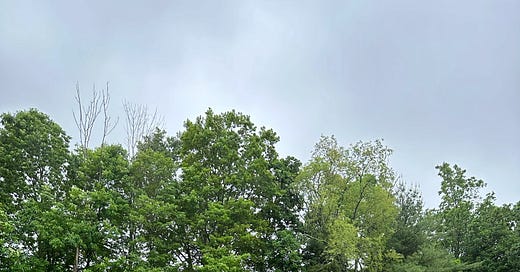



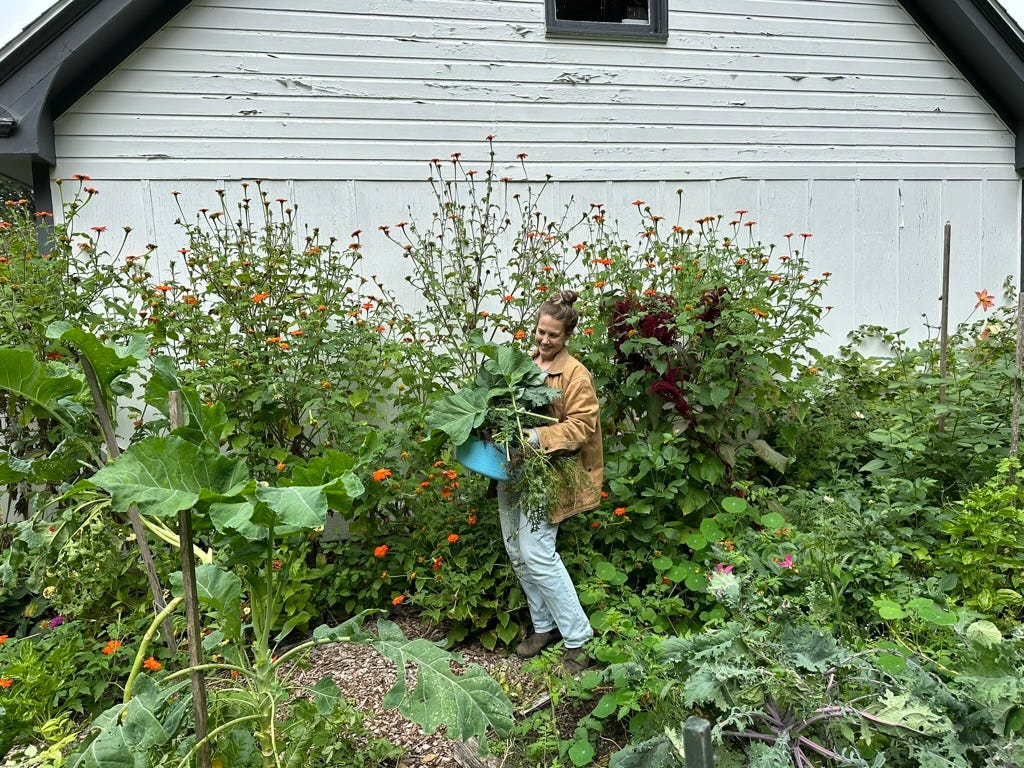
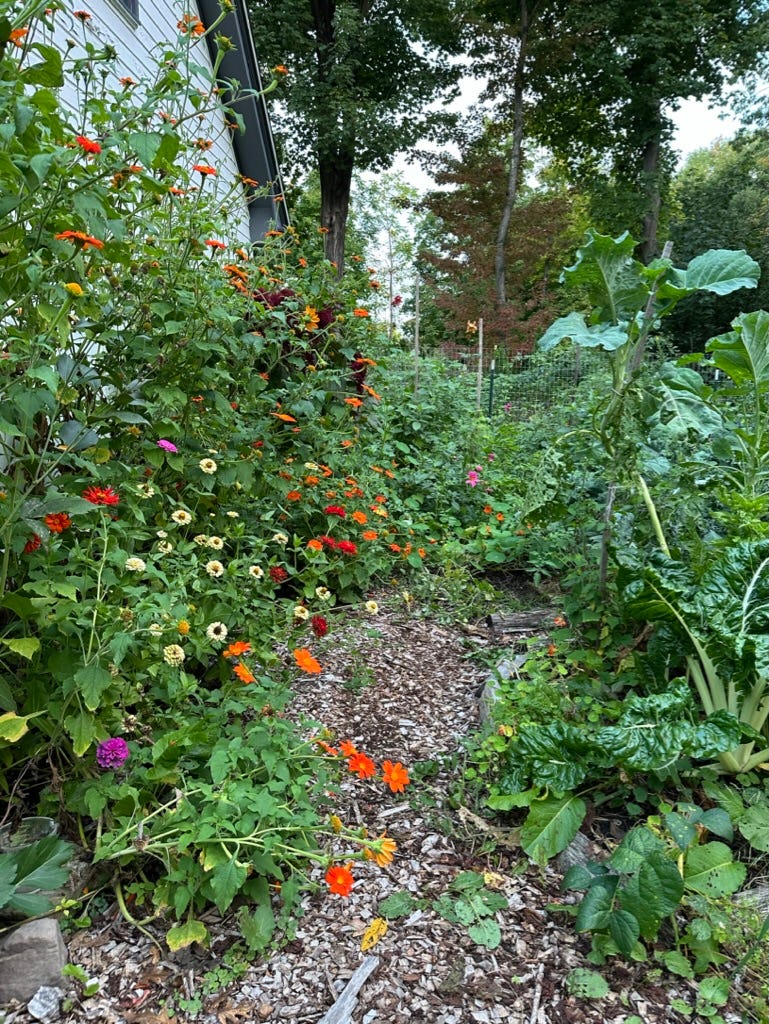


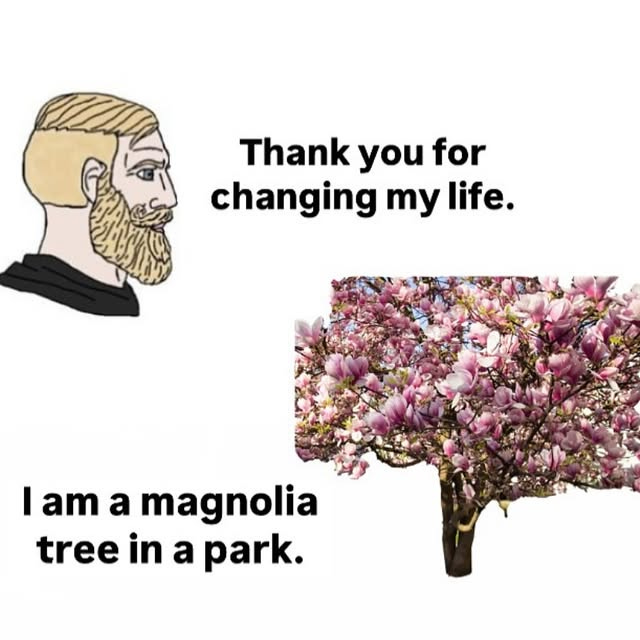


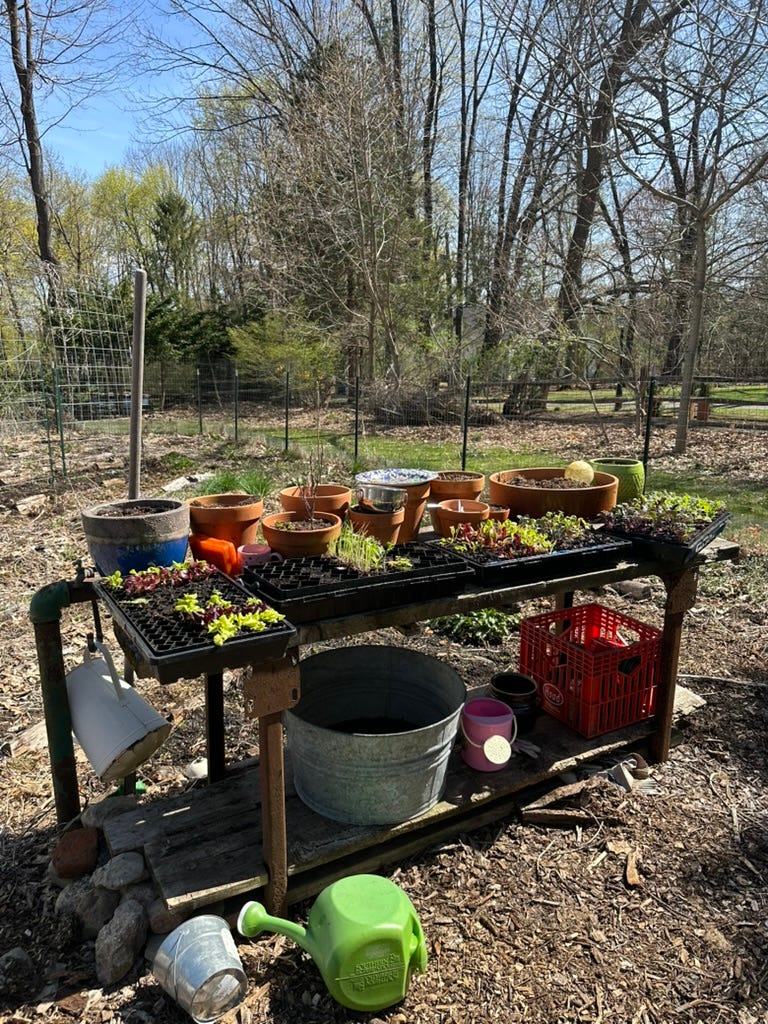
before I had kids, I was a professional gardener (landscaper, but plant focused, and detail oriented) and I worked on some of the finest properties in the state. Learning how to not be a type-a and/or obsessive gardener is still such a challenge for me, 4 seasons later, but it has been so nice to learn the benefits of being a little slower, messier, and more wild in my garden (and life).
loved this one, thank youuu
I am in exactly the same situation! Love the advice, very affirming for how I also roll. I think of my garden as modern cottage, a bit put together but mostly can’t be contained.